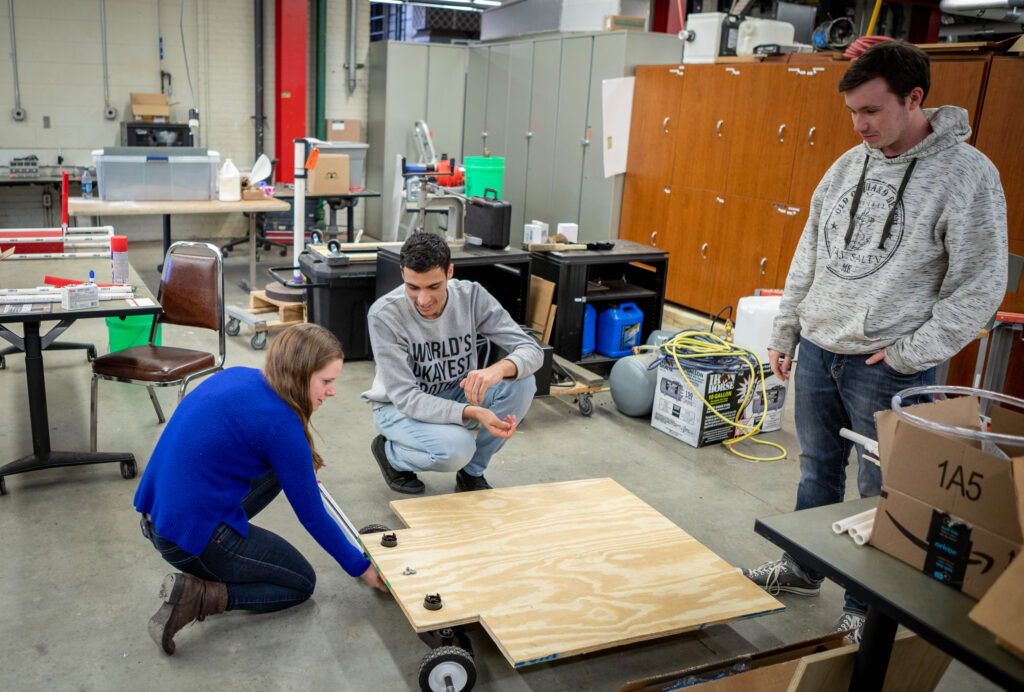Press & Media
In The News.

In The News.
 From Left to Right: Julia Oppenheimer, Marwan Ghellai and Cody Corey work on their platform in the machine shop in Castleman Building. (Eli Freund/UConn Photo)
From Left to Right: Julia Oppenheimer, Marwan Ghellai and Cody Corey work on their platform in the machine shop in Castleman Building. (Eli Freund/UConn Photo)
When ThayerMahan came to a group of senior University of Connecticut mechanical engineering students with a challenging real-world problem, those students responded with a unique and cutting-edge solution.
ThayerMahan, a Groton-based company, working with government and industry partners to design, manufacture and operate systems that collect acoustic and electronic information on the world's oceans. ThayerMahan challenged the students to launch and land an aerial vehicle from a moving ocean surveillance platform.
The student group consists of Julia Oppenheimer, Cody Corey, and Marwan Ghellai. According to Oppenheimer, one of ThayerMahan's major problems was the possibility of losing the drones, which are prohibitively expensive. Traditionally, this has been done by pneumatically launching then not recovering the drone.
“ThayerMahan wants to begin using drones, also called unmanned aerial vehicles (UAVs), to collect data from the ocean. However, there's no way to retrieve these UAVs once they're too far out in the ocean,” Oppenheimer said. “The UAVs usually crash or are lost, which can cost between $10,000-$80,000 every time.”
To solve this, Oppenheimer's team is collaborating with another senior design team to build a platform that could be placed on top of ThayerMahan's fleet of unmanned surface vehicles. This platform would autonomously summon and fully-charge the drone once it's done collecting data.
Oppenheimer remarked that because of the potential costs of a losing a drone, ThayerMahan doesn't want to begin testing any of this in the water just yet. This is why her team is designing and testing the platform on land first, before it's deployed on a USV.
Oppenheimer's team is dedicated to building the actual platform, while the other team is focused on programming the drone to connect to the platform later on. The first step in the journey is for the team to finish their platform prototype during the break and then work on testing.
“Hopefully, if all goes well, testing will start in early February as we plan on having this prototype finished during winter intersession,” Ghellai said. “However, the other team can start testing other things before we join together for the major tests.”
Oppenheimer said the key for both teams will be for the drone to land on a stable platform. Then, the team will transition to a moving platform to simulate the real-life conditions on a rough ocean environment.
This article is part of a multi-part series on engineering students and their journey through senior design. Part two of this team's journey will come out in April 2020.